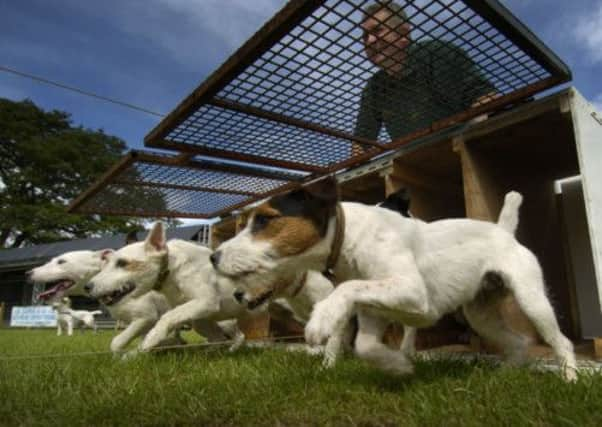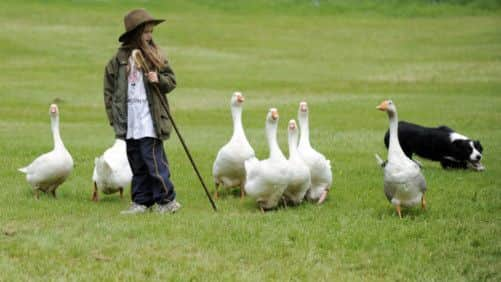Game Fair teaches us value of our natural heritage


AS well as being a much-loved event on the Scottish social calendar, the Scottish Game Fair serves a very important purpose.
The roots of next week’s annual event lie in the Game & Wildlife Conservation Trust’s goal of educating and informing the public about our natural heritage, the issues in our countryside and the role that game and wildlife play in our heritage, economy and general well-being.
Advertisement
Hide AdAdvertisement
Hide AdThe event has grown to become Scotland’s biggest game fair, reflecting the changes in countryside management and welcoming all to what is our largest educational event. The need for the fair is clear when we consider how much Scotland’s countryside has changed in the 25 years since the event was first held, at Scone Palace.


Over the years we have tracked, and seen halted, the loss of heather moorland to trees and grazing, flagging up the vital role that moors managed for red grouse have played in protecting this habitat. We have seen the sad decline of the grey partridge but also helped enthusiastic farmers set up Grey Partridge Groups which are now strongholds for this species as well as the brown hare. New technology has helped move us from simply counting the number of woodcock shot in Scotland to understanding that these birds range as far away as Russia to breed. Our ecologists have tracked the rising fortunes of the black grouse in northeast Scotland where they benefit from moorland management and are studying the perplexing shrinkage of their southern Scottish range.
These five species capture what we feel is best about Scottish wildlife, its intimate association and need for farming, forestry and sporting management. And we are always looking for new ways to catch the public’s imagination so we have championed these species as our “Year of Natural Scotland” Big 5. They will form part of the fascinating and interactive GWCT, Forestry Commission Scotland and Scottish Natural Heritage central exhibit at the three-day Fair, which opens at Scone next Friday.
The public meeting of GWCT, FCS and SNH may seem unusual to some but it is our organisations’ collective determination to forge ahead for the good of our natural environment which has uncovered common ground. This initiative builds on a Statement of Intent signed by GWCT and SNH in 2011 – the aim of which was to work together more effectively in order to achieve more for Scotland’s biodiversity. Both organisations pledged to work in partnership afresh to benefit nature and Scotland’s people.
The aim of Year of Natural Scotland is to promote Scotland as one of the world’s most stunning places, full of natural splendour, awe inspiring landscapes, wildlife and biodiversity. One of the overall objectives of the initiative is to encourage visitors to enjoy our wonderful landscapes and scenery, wildlife and heritage responsibly. It aims to inspire everyone to celebrate Scotland’s outstanding landscapes, wildlife and its natural larder.
This aim is entirely complementary with the Scottish Game Fair which has served as a platform to showcase many forward-thinking GWCT reports and publications which have helped shape our countryside. In 1991, we published our first Economic Survey of Scottish Grouse Moors which defined how important grouse moor management and shooting was to the financial health of our country. 1992 saw the publication of Grouse in Space and Time – a ground breaking report on the population biology of grouse. In 1998, a study on nest site selection of hen harriers in Scotland was published. In 1999, there was the publication of Question of Balance – an impressive publication which tackled all the main conservation issues and put forward research needs and a conservation plan for each of the principal game species in Britain, including the management of habitats in which they are found.
Moving on to 2003, we saw the launch of the first national breeding woodcock survey which identified Scotland as a stronghold of the species. In 2004, the results of a study by GWCT were published showing the importance of game crops at helping to stem the decline of threatened farmland songbirds in Scotland. Then six years ago, the ten-year Langholm Moor Demonstration Project was launched. Since 1988, the Fair’s raison d’etre has been to inform and educate, whilst challenging and progressing the management of our countryside.
It is a showcase for all that is good about rural Scotland which encourages participation and welcomes discussion. The Game & Wildlife Conservation Trust is proud to be at the heart of researching and informing those changes through the education and training of the farmers, gamekeepers, tenants and owners who devote their time to protecting and enhancing our countryside.
• Katrina Candy is head of Public Relations & Education (Scotland) at the Game & Wildlife Conservation Trust
SEE ALSO: